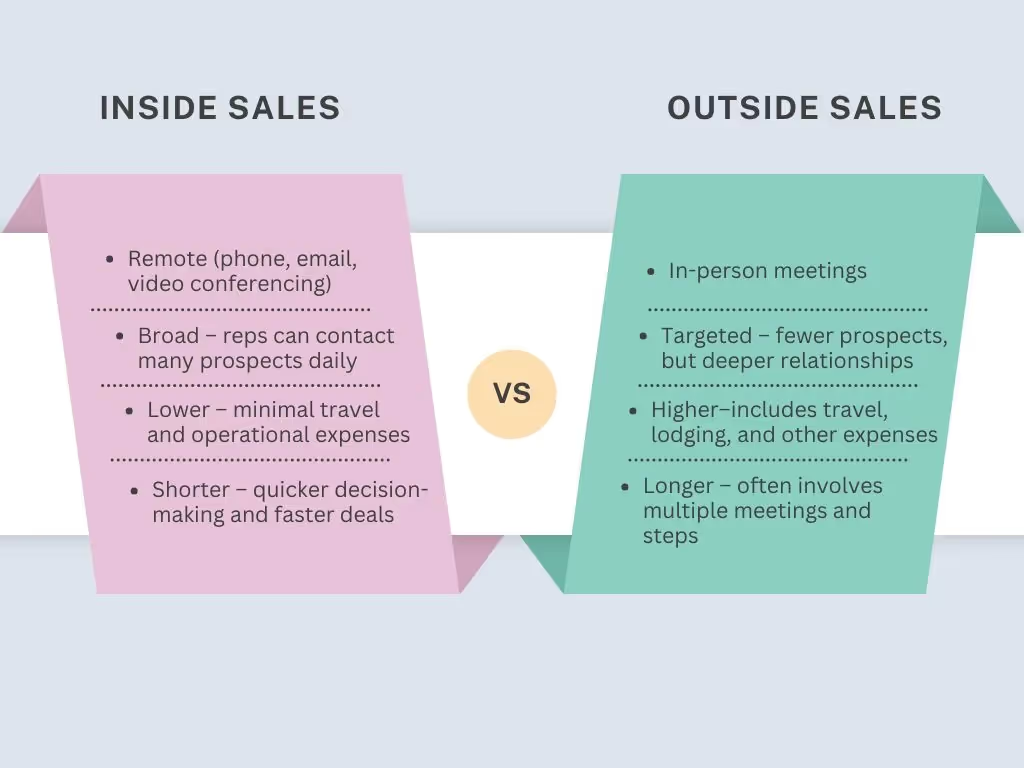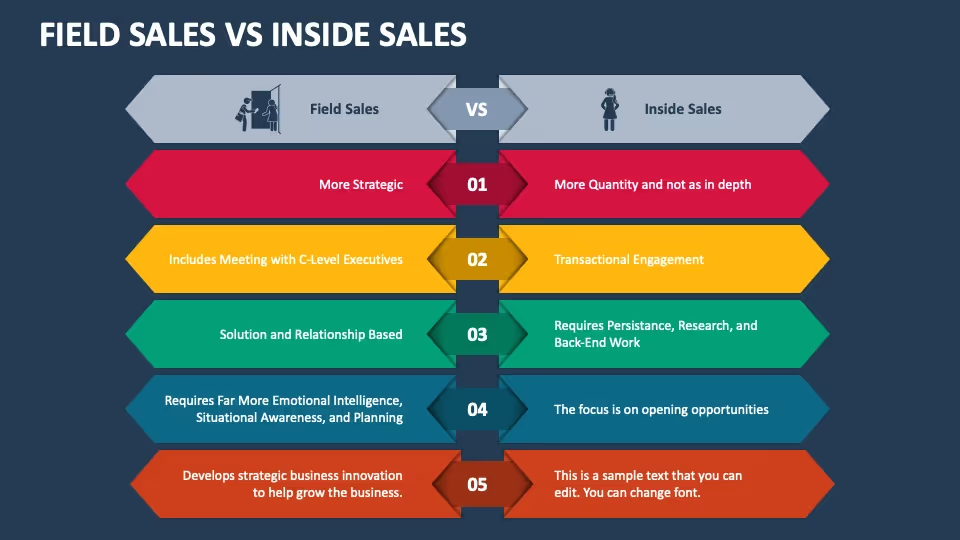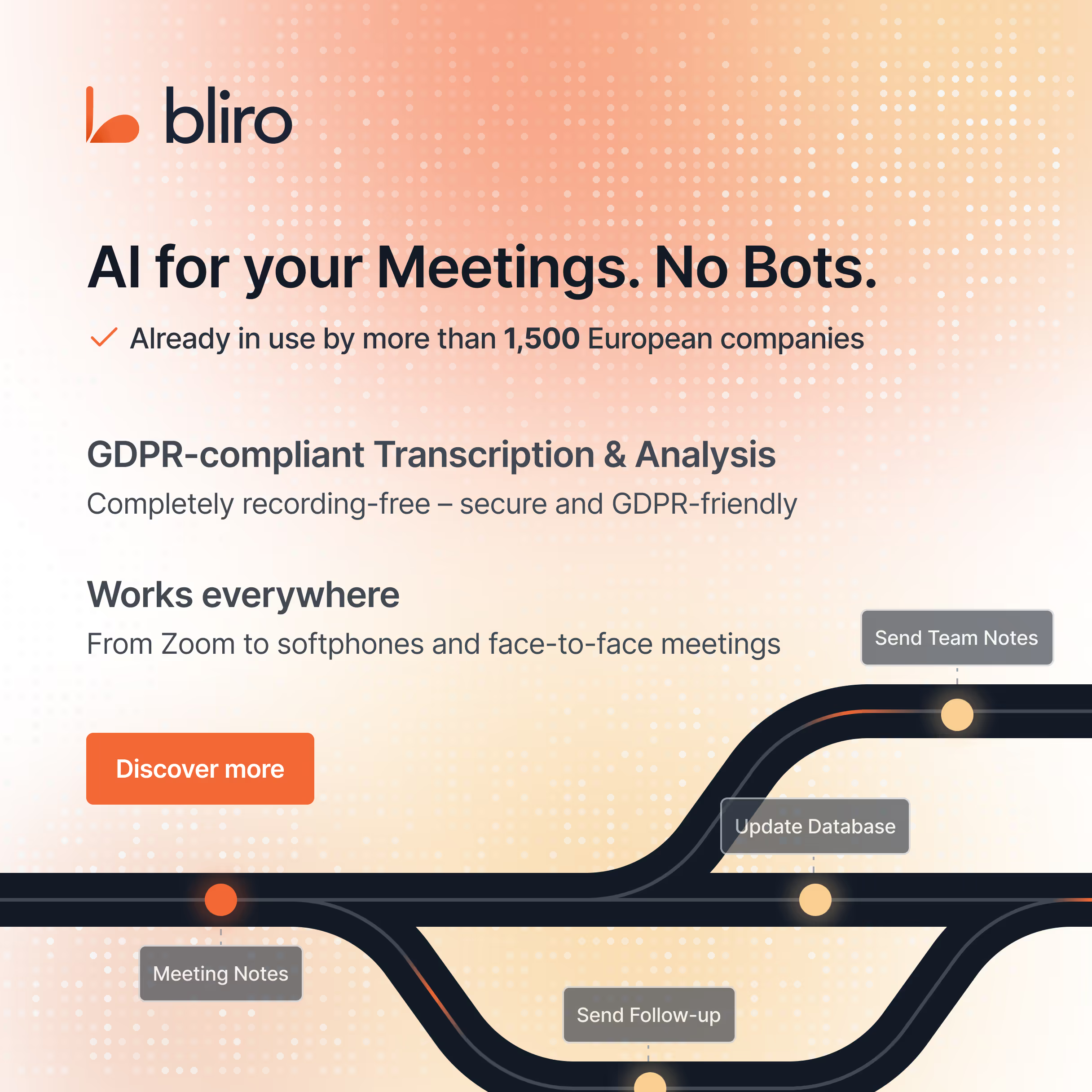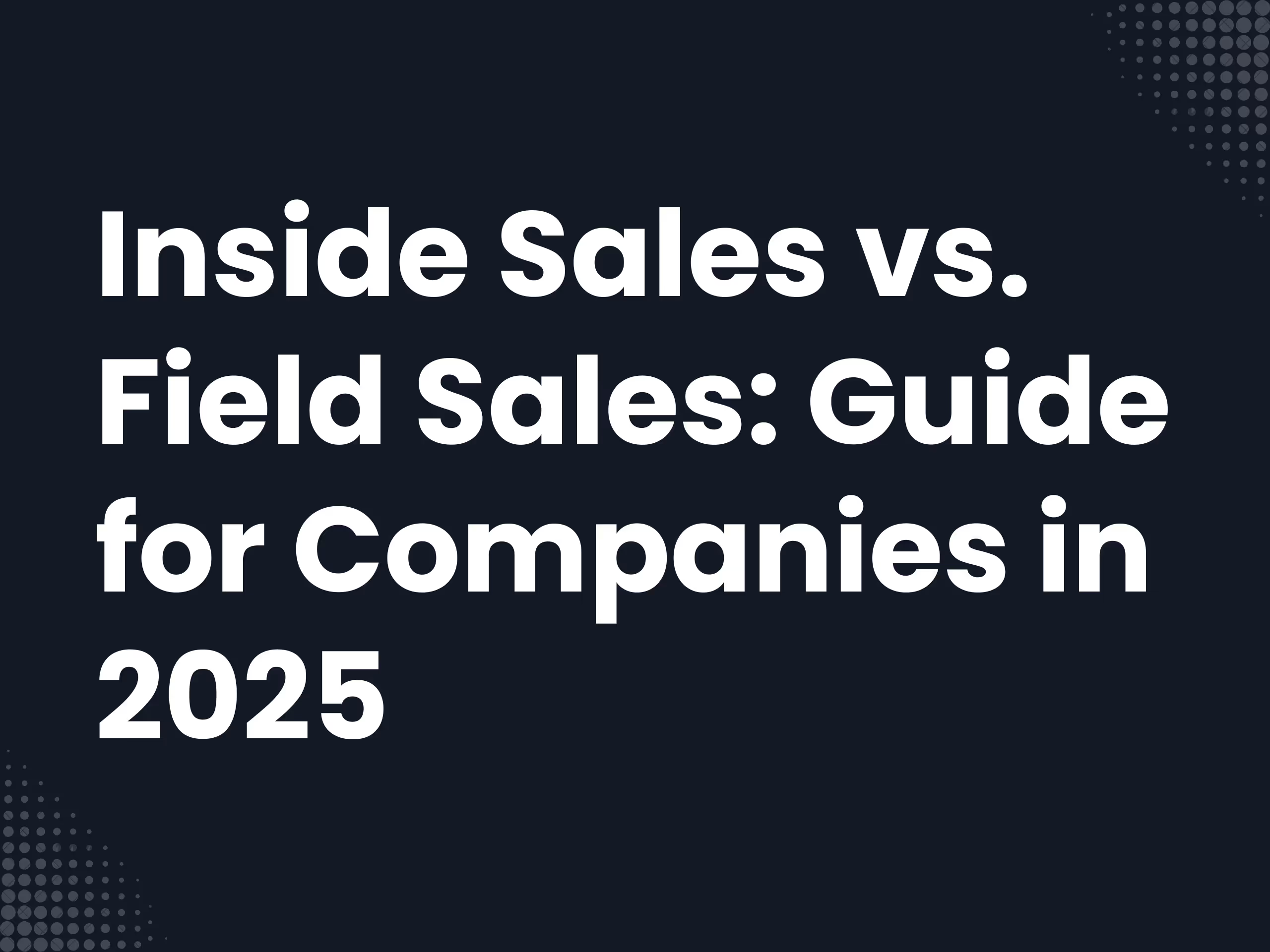Inside Sales is reaching new dimensions of efficiency in B2B sales. A single Inside Sales employee serves up to 1,000 customers remotely - a capacity that far exceeds traditional field service structures. The labor market reflects this development: Over 7,600 open inside sales positions are offset by around 6,500 field service job offers.
B2B customers only need 7-8 contacts per year for optimal support. At the same time, 70% to 80% of B2B buyers choose digital interactions or self-service over personal sales channels. With inside sales, companies save up to 20% of sales costs compared to traditional field sales.
The voting between the two models requires strategic thinking. Inside sales employees create 4.5 times higher scheduling capacity than sales representatives, while the field sales team scores points with more direct customer contact and more attractive salary prospects. The decisive factor is: Which sales model fits your specific business requirements - or does a hybrid approach with tools such as Bliro offer the best solution?
What is inside sales and how does it differ from field sales?

B2B companies are faced with a clear decision: How do I optimally organize my sales? The distinction between inside sales, field service and internal sales decisively determines the success of your sales strategy.
Inside Sales Definition and Tasks
Inside Sales works as a strategic sales process from a distance. All sales activities and customer service are carried out via telecommunications - telephone, e-mail or messenger. An Inside Sales Manager assumes full sales responsibility and works proactively, not reactively.
The areas of responsibility correspond to those of a sales representative:
- Acquisition of new customers
- Support for existing customers
- Interface function between different company departments
- Needs analysis and sales transactions
The decisive advantage: Inside Sales employees support up to 1,000 remote customers. This capacity exceeds field sales by four times, and even significantly more in specific industries. Without travel time, the entire working time flows into productive customer contacts.
Field service tasks in B2B sales
Medium-sized B2B companies describe field service as their “core”. Sales representatives visit customers personally on site and embody the company philosophy in direct contact.
The core tasks in the B2B sales force:
- Personal customer acquisition and new customer acquisition
- Establishing long-term customer relationships
- Comprehensive needs analysis and individual advice
- Conducting and concluding negotiations on site
- Gathering market and competitive information
Complex products or services often require personal contact. Sales representatives represent the company at trade fairs, conferences and specialist events. Autonomous daily planning according to customer appointments is structurally different from inside sales.
Differences to internal sales
Inside Sales Is mistakenly used as a synonym for traditional internal sales. This confusion entails risks. The internal sales department focuses on administrative and organizational tasks:
- Preparation of offers
- Order processing
- Schedule coordination
- Handling complaints
The traditional internal sales department has no responsibility for its own sales and does not actively sell. It reactively supports the sales force. Inside Sales, on the other hand, combines sales-active activities with the efficiency of remote communication and pursues its own sales goals.
This confusion of terms leads to problems in personnel planning. Back office applicants typically don't want to work as active salespeople.
Tools like Bliro create a bridge between all forms of distribution. They enable seamless collaboration between inside sales and field sales for a hybrid model that combines inside sales efficiency with the personal touch of field sales. Companies can choose the appropriate form of distribution depending on the customer segment, product complexity and sales phase.
Advantages and limits of both sales models
Both sales approaches bring specific strengths. The right choice depends on your business goals, customer segments, and available resources.
Comparing efficiency and scalability
Inside Sales creates impressive support capacities. While sales representatives serve 100-500 customers, an inside sales employee manages up to 1,000 customers from afar. Travel time is completely eliminated - all working time is spent on productive customer contacts.
Scaling works without geographical barriers. Inside sales teams grow flexibly with your business. Compared to the sales force, you reach 2 to 3 times scaling - ideal for fast-growing companies or new markets.
Customer contact: digital vs. personal
Personal contact remains the trump card of sales. 53% of companies regard online appointments as less effective and rely on personal visits to important transactions. Complex products or new customer acquisition benefit from direct persuasion.
However, customer behavior is changing. B2B buyers use digital procurement processes as a matter of course. Modern video conferences create real relationships - even at a distance. Many of the companies rate online appointments for customer care as a good alternative.
Cost structure and resource requirements
Inside Sales reduces sales costs by up to 20% compared to field sales. The Harvard Business Review documents savings of 40-90% while revenue remains the same or increasing.
These efficiency gains result from:
- Elimination of travel and expense reports
- Lower personnel costs per customer served
- Optimized use of resources through digital workflows
Yet 29% of companies continue to invest in field sales. 45% even report an increasing need for sales representatives - a clear signal of the continued relevance of personal customer relationships.
Technological requirements
CRM systems form the basis of successful inside sales operations. They create:
- Central customer information for all team members
- Complete interaction histories across all channels
- Data-based decision-making bases for your management
Video conferencing tools, email marketing, and social media complement the technology stack. These investments pay off through higher efficiency. AI and automation are continuously optimizing sales processes.
Sales representatives need mobile CRM solutions and presentation tools. However, there is often a lack of digital literacy - as 21% of companies see it.
When is which model suitable?

A successful sales strategy starts with the right choice of model. Product type, target market, and customer segments determine which approach delivers optimal results. Learn how to identify the right form of distribution for your specific requirements.
Deciding by customer segment
The customer pyramid provides clear guidance for your sales strategy. A customers and key accounts benefit from personal field service, while B and C customers are optimally supported by inside sales. Small and medium-sized companies with complex requirements but moderate sales potential can be reached profitably through virtual visits.
Inside sales teams can serve significantly more customers than traditional field service structures - ideal for customer segments that would otherwise go unnoticed. Tools such as Bliro further increase efficiency and ensure seamless customer service across all segments.
Decision based on product complexity
Your product features determine the optimal sales model:
- Standard products: Self-service and inside sales work perfectly with low complexity and minimal customization requirements.
- Consultation-intensive solutions: Inside Sales handles products that require explanation but do not require on-site presence.
- Highly complex systems: Extensive customization and integration projects require field service expertise on site.
Decision after sales phase
Different sales phases require different approaches. Inside Sales excels at cold calling, lead generation and customer support after the purchase. The sales force dominates complex negotiations and final contracts, where personal presence becomes decisive.
Inside Sales can systematize offer tracking and consistently convert offers into orders through a defined follow-up process. This hybrid approach with tools such as Bliro enables targeted field service deployment exactly when it is actually needed.
Decisions by region
Geographical factors significantly influence your choice of sales model. Metropolitan areas with high customer density justify field service structures due to low travel costs per customer. Inside Sales is conquering sparsely populated regions and “white spots” where sales representatives do not pay off economically.
International market development benefits in particular from inside sales, as no physical presence is required on site. Tools such as Bliro optimally support these regional strategies and enable efficient support for local and international customers.

Hybrid sales models as a strategy for the future
The future of sales does not belong to either/or. Smart companies rely on the best of both worlds - hybrid sales models strategically combine the strengths of inside sales and field service.
What is hybrid sales?
Hybrid Sales combines inside sales efficiency with the personal relationship of the sales force. Telephone and digital communication complement targeted personal visits. Companies reach customers faster and more effectively without sacrificing personal interactions.
How field service and inside sales complement each other
The division of tasks clearly works: Sales representatives handle A-customers and complex transactions, Inside Sales takes care of B and C customers. A sales representative makes 4 customer visits a day, while Inside Sales realizes 12 contacts.
The 1:5-8 model has proven to be ideal - an Inside Sales employee supports 5-8 sales representatives. Regular exchange and defined handover processes create seamless customer service. Both teams work together instead of against each other.
Example: Bliro as a tool for hybrid teams
Hybrid teams need the right technology. Bliro was developed specifically for direct customer contact. The AI assistant combines both forms of sales through:
- Automated notes for the entire team
- Valuable customer insights for management teams
- 100% transparency in all customer meetings, online and on-site

Benefits for customer loyalty and revenue growth
The figures speak for themselves: teams with Bliro reach up to 22% higher closing rates and 11% higher order volumes. Improved collaboration between office and field staff plus digital tools create these successes.
Hybrid sales requires a clear strategy and distribution of roles The key: Customers receive digital and personal support - exactly where it is most effective.
Implement Inside Sales successfully
Structured implementation is decisive for the success of inside sales teams. Companies with clear implementation strategies achieve higher conversion rates and sustainable efficiency gains.
Inside Sales Manager tasks
The Inside Sales Manager assumes responsibility for all sales activities and manages his team strategically. His core tasks include acquiring new customers and servicing existing customers, but his sphere of influence is much wider.
As an interface between team and management level, he analyses markets and develops new sales strategies. His strategic realignment is particularly decisive in economically challenging phases. Successful inside sales managers combine operational excellence with visionary team leadership.
Key tools and technologies
The right technology equipment forms the basis of efficient inside sales operations:
- CRM systems such as Salesforce or HubSpot for central information management
- Communication tools like Slack and Zoom for efficient teamwork
- Virtual salesrooms and sales hubs for optimal product presentations
Tools like Bliro expand this basic equipment through AI-based conversation analysis. This gives teams valuable insights into customer needs and continuously optimize your sales processes.
Avoid typical mistakes during implementation
Implementation errors cost time and resources. The most common problems: excessive talking instead of active listening and overly general sales strategies without a clear focus.
Other critical areas of error include inadequate employee training or overly complex system adjustments. The exclusive focus on product features rather than on specific customer benefits is becoming particularly problematic. Successful teams focus on solutions, not features.
Conclusion: This is how you make the right decision for 2025
The choice between inside sales and field service requires strategic clarity rather than ideological definition. Both models offer specific advantages: Inside Sales impresses with efficiency and scalability, and field sales with personal relationships and depth of advice.
The decision is based on four core factors: customer segments, product complexity, sales phases and regional conditions. A customers with high potential justify the personal effort, while B and C customers are served more profitably through inside sales.
Hybrid approaches are becoming the standard solution for successful B2B companies. Both forms of distribution use these combinations specifically where they have an optimal effect. The result: higher closing rates and stronger customer loyalty.
Tools like Bliro create the technological basis for successful hybrid teams. The AI assistant seamlessly combines both sales models and ensures complete transparency. Teams focus on value-adding customer activities instead of administrative tasks.
Your strategic approach determines success. Define clear roles, invest in appropriate technologies and continuously develop your employees. This basis enables the optimal use of all sales models.
The customer remains your focus point. Whether digitally or in person, it is crucial that you reach customers where they receive the greatest added value. With this clarity and modern tools such as Bliro, you can successfully shape the future of your sales.




